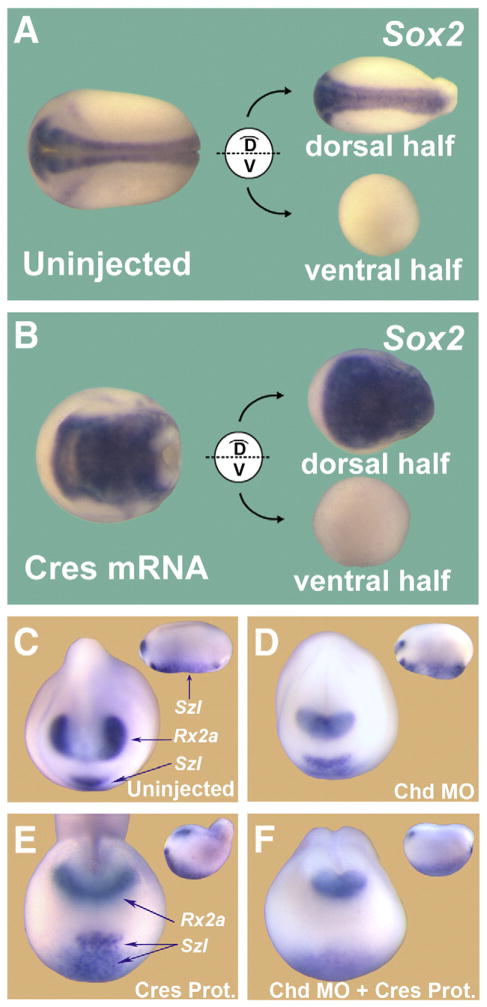Fig. 5.
Crescent requires Chordin in order to dorsalize the embryo. (A) Embryos bisected along their D–V axis. The dorsal half self-regulates, forming a well-proportioned embryo, while the ventral half forms a belly piece consisting of ventral tissues. (B) Crescent mRNA microinjection increases SOX2 expression in dorsal halves, but has no effect on ventral half-embryos. Thus, the dorsalizing activity of Crescent requires a dorsal component. (C) Uninjected control embryos showing normal Rx2a and Sizzled transcript levels at stage 20. (D) Embryos injected with Chordin MO showing a ventralized phenotype consisting of reduced Rx2a and expanded posterior Sizzled transcripts (inset). (E) Injection of Crescent protein into the blastocoele dorsalizes embryos, expanding Rx2a expression, decreasing Sizzled expression in the posterior-ventral region and increasing Sizzled in the anterior-ventral region (where BMP2 is expressed). (F) Injections of Crescent protein into Chordin-depleted embryos are without dorsalizing effects; this result indicates that Crescent protein requires Chordin to dorsalize Xenopus embryos. Insets show lateral views.

